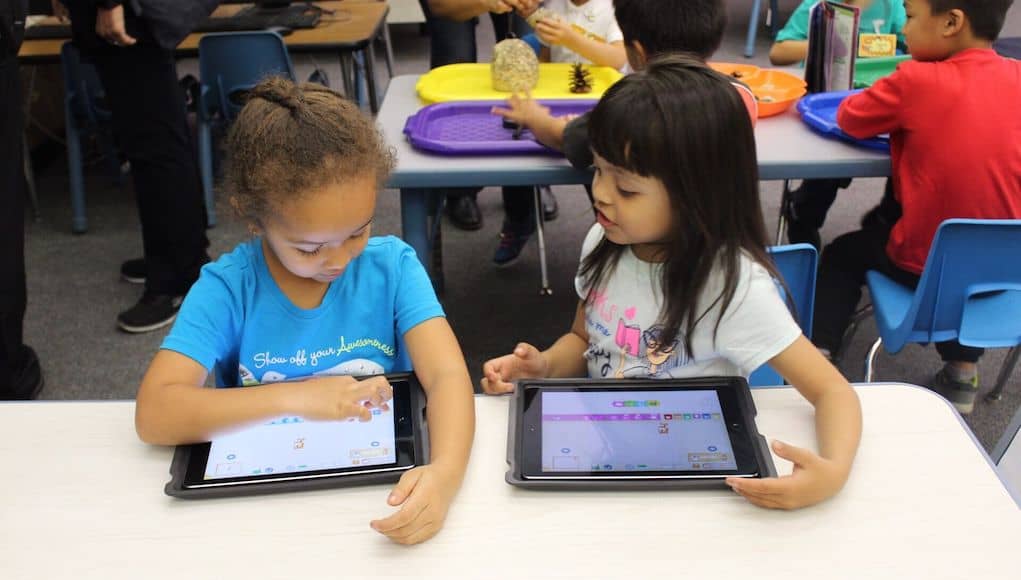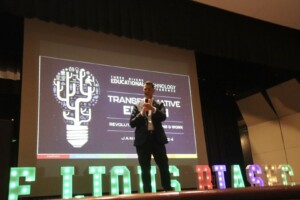Driving Innovation: Accelerators

By: Norton Gusky
In 2018 the Consortium for Schools Networked (CoSN) transformed the K-12 Horizon Report into The CoSN K-12 Driving Innovation Series with three reports. The reports are based on the work of over 100 educators around the globe who look at emerging technologies through three lenses: Hurdles, Accelerators, and Tech Enablers. As the co-chair of the CoSN Emerging Technologies Committee, I was selected to be part of the process. The Advisory Group engaged in several months of discourse about the major themes driving, hindering, and enabling teaching and learning innovation at schools. After each phase, final thoughts from advisory board members were distilled in surveys discerning the top ve topics to feature in each publication.
 Currently, I’m working with the Emerging Technologies Committee to expand the work of the Advisory Group around Accelerators, in particular, Data-Driven Practices. The CoSN Emerging Technologies Committee felt that all ve themes (see graphic) were important, but for the CoSN audience, Data-Driven Practices had the greatest relevance. Plus it has been over three years since CoSN had worked on examples in this area.
Currently, I’m working with the Emerging Technologies Committee to expand the work of the Advisory Group around Accelerators, in particular, Data-Driven Practices. The CoSN Emerging Technologies Committee felt that all ve themes (see graphic) were important, but for the CoSN audience, Data-Driven Practices had the greatest relevance. Plus it has been over three years since CoSN had worked on examples in this area.
According to the Driving Innovation report, data-driven activities can be defined according to this statement: With more engagement, performance, and other kinds of data being collected, schools are leveraging that data to make decisions about curriculum, hiring, technology investments, and more.
CoSN’s previous discussions on Data-Driven Practices focused on administrative issues relating to privacy, security, and uses of data to inform instruction, with a major focus on compliance issues relating to No Child Left Behind. Now with the move towards student-centered learning, there’s a growing interest in looking at other ways of using data in the educational arena. The Data Fluency project at Carnegie Mellon University’s CREATE Lab is a great example of how data is now viewed as a tool for empowering both educators and student learners.
According to the Mission/Vision statement from the Fluency Project:
“Fluency is a process of deep inquiry, case-making, and advocacy. Guided by shared values, we explore how technology and data can serve as tools to enhance the voices of teachers and students. Co-powering teachers and students to be “Fluent” means they can gather information, reconcile it with their personal experience, and influence public discourse. Within this framework, the focus is on creating an individual path for exploration based on self-knowledge, in the context of the world around you. While students will have access to new tools for understanding data and creating compelling media, we believe it is the Fluency process that will lift up their voices, and mold them into critical thinkers and active citizens.”
In order to understand how this looks in a K-12 world, I interviewed school leaders and teachers from two school districts in the Pittsburgh, PA region who are taking a lead in using data to enhance student agency – Carlynton and Allegheny Valley. The principal of Carlynton Jr/HS, Michael Loughren, introduced me to two of his English teachers who have taken the lead on the Data Fluency project – Kristen Fischer and Wendy Steiner. We don’t usually think about data projects in English. Kristen and Wendy have discovered a new approach to give students a voice in their writing, oral and digital communications.
For the study of Shakespeare’s Macbeth, students now analyze the character in relation to episodes of PTSD. They have to find details (data) in the form of repeated words and phrases that support an argument that Macbeth suffered from PTSD. For another project, students had choices of expression for an oral history project on a self- selected element of family history. The students used a different tool to express themselves – a podcast format. According to Kristen and Wendy, there have been a number of benefits. Student work is now always original with no elements of plagiarism. All students are engaged and see a purpose in their writing. According to Michael Loughren the Data Fluency project has deepened and strengthened relationships between teachers and students. In addition, he has witnessed a decrease in the number of discipline problems.
At Allegheny Valley, Brent Slezak, the technology director, has seen similar benefits using the Data Fluency approach. Student voice has been amplified by allowing each student to make their case, which in turn has led to more student engagement. Brent emphasized the importance of using an inquiry-based processed. Students need to start by asking essential questions. At Allegheny Valley, the essential question for one high school project was: What is air quality? Why is it important? Students used a SPEC sensor from the CREATE lab to monitor the air quality in multiple classrooms. The students then had to analyze the data and make their case. The problem required the students to “scrub” the data and visually represent what was happening. The students discovered patterns that led to conversations with teachers. The students had to develop a narrative so that the data created a story. The students then had to advocate for changes within the classrooms. The students discovered how data revealed solutions for real-world problems.
There were more projects that Carlynton and Allegheny Valley teachers created. In every case, students voice became amplified. Data provided a way to gain insights into real-world problems. Students discovered that data can be more than numbers. Students took their ideas to new levels by becoming agents of change advocating for solutions to solve real-world challenges.
For more, see:
- Inspiring and Supporting English Learners with Adaptive Tools
- Is the “Place” in Place-Based Learning Enough?
- Organizing Your School As A List of Courses Doesn’t Work For Learners
Stay in-the-know with innovations in learning by signing up for the weekly Smart Update.
Norton Gusky is an educational technology broker and uses technology to empower kids, educators and communities. You can find him on Twitter at @ngusky.
This blog was originally posted on nlg-consulting.net







0 Comments
Leave a Comment
Your email address will not be published. All fields are required.